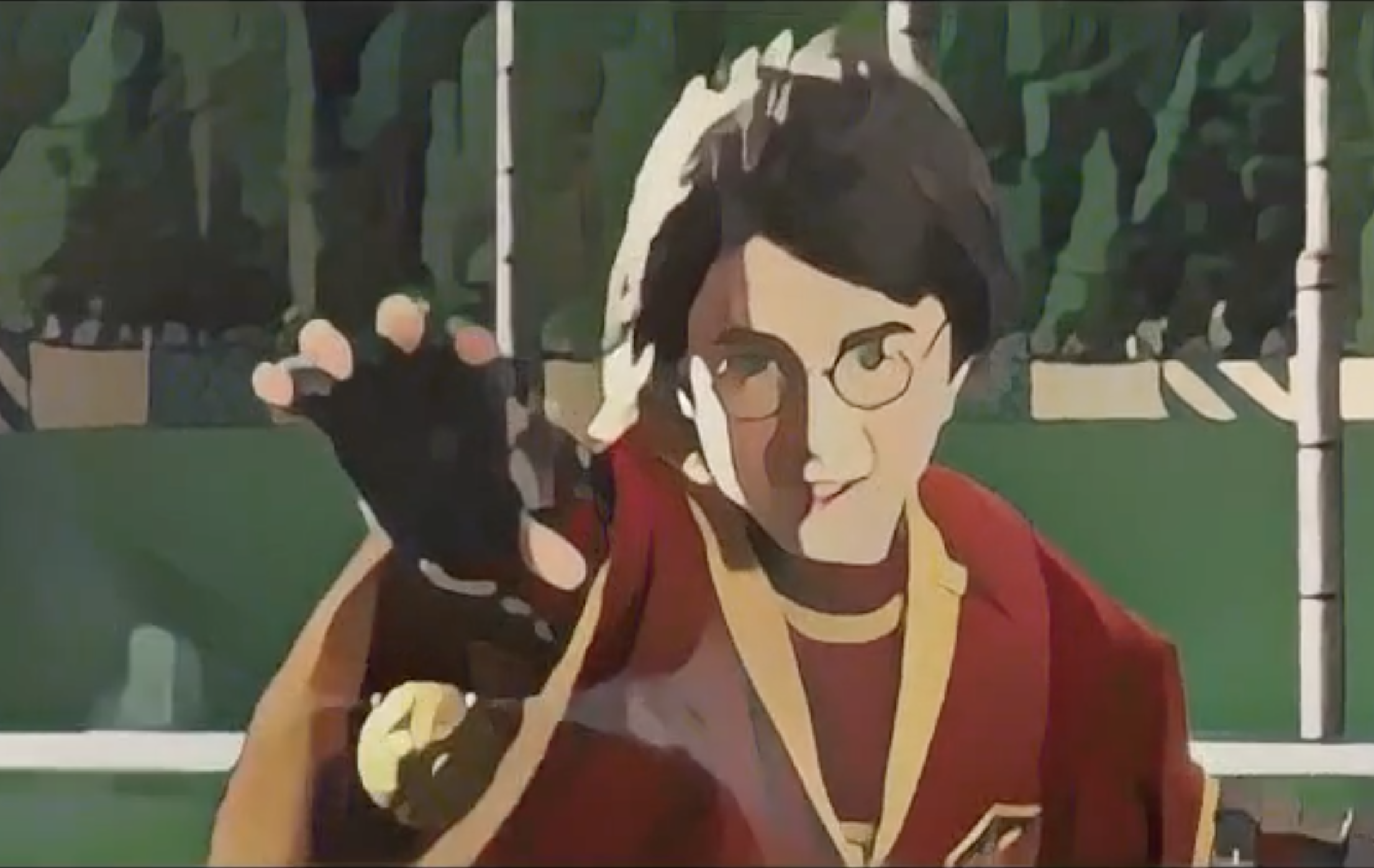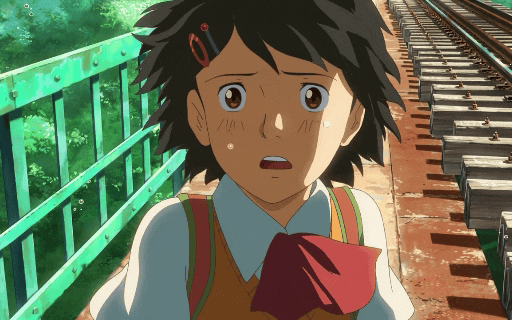cartoonify_video
Maintainer: sanzgiri

13

| Property | Value |
|---|---|
| Run this model | Run on Replicate |
| API spec | View on Replicate |
| Github link | View on Github |
| Paper link | No paper link provided |
Create account to get full access
Model overview
The cartoonify_video model is a Replicate AI model created by sanzgiri that can cartoonize a video. This model can be compared to similar models like AnimateLCM Cartoon3D Model, Turn your image into a cartoon, and AniPortrait: Audio-Driven Synthesis of Photorealistic Portrait Animation. These models all aim to transform media into a cartoon-like style, but with different approaches and capabilities.
Model inputs and outputs
The cartoonify_video model takes a video file as input and outputs a new video file that has been cartoonified. The model allows you to specify the frame rate and horizontal resolution of the output video.
Inputs
- Infile: The input video file
- Frame Rate: The number of frames per second to sample from the input video
- Horizontal Resolution: The horizontal resolution of the output video
Outputs
- Output: The cartoonified video file
Capabilities
The cartoonify_video model can transform regular video footage into a stylized, cartoon-like appearance. This can be useful for creating animated content, visual effects, or artistic video projects.
What can I use it for?
The cartoonify_video model could be used to create a variety of cartoon-themed content, such as animated shorts, music videos, or social media posts. It could also be used in film and video production to achieve a specific visual style or aesthetic. Given the popularity of cartoon-style content, this model could be leveraged to create engaging and visually appealing videos for personal, commercial, or creative purposes.
Things to try
One interesting thing to try with the cartoonify_video model would be to experiment with different input videos to see the range of styles and effects that can be achieved. For example, you could try cartoonifying footage of people, animals, landscapes, or abstract scenes, and observe how the model transforms the visual elements. Additionally, playing with the input parameters, such as frame rate and resolution, could lead to unique and unexpected results.
This summary was produced with help from an AI and may contain inaccuracies - check out the links to read the original source documents!
Related Models

cartoonify

4
The cartoonify model is an AI-powered image processing tool developed by sanzgiri that can transform regular photographs into vibrant, cartoon-like images. This model is an example of a machine learning model hosted on Replicate, a platform that simplifies the deployment and experimentation of AI models. The cartoonify model is similar to other cartoon-style image processing models like cartoonify_video, cartoonify, photo2cartoon, and animate-lcm, each with their own unique approaches to the task. Model inputs and outputs The cartoonify model takes in a single input - an image file in a supported format. The model then processes the input image and outputs a new image file in a URI format, representing the cartoon-like transformation of the original photograph. Inputs Infile**: The input image file to be transformed into a cartoon-style image. Outputs Output**: The transformed cartoon-style image, output as a URI. Capabilities The cartoonify model can take a regular photograph and apply a distinct cartoon-like style, similar to the artistic style of animated films and illustrations. The model is able to capture the essence of the original image while applying bold colors, exaggerated features, and a hand-drawn aesthetic. What can I use it for? The cartoonify model can be a valuable tool for a variety of creative and artistic projects. For example, you could use it to transform personal photos into fun, whimsical images for social media posts, greeting cards, or other visual media. Businesses could also leverage the model to create cartoon-style illustrations for marketing materials, product packaging, or brand assets. The model's capabilities could be especially useful for individuals or companies looking to add a touch of playfulness and creativity to their visual content. Things to try One interesting way to experiment with the cartoonify model would be to try it on a variety of different types of images, from landscapes and cityscapes to portraits and still life compositions. Observe how the model handles different subject matter and see how the resulting cartoon-style transformations can bring out new perspectives or highlight unique details in the original images. Additionally, you could try combining the cartoonify model with other image processing tools or techniques to create even more distinctive and imaginative visual effects.
Updated Invalid Date

cartoonify

530
The cartoonify model is a powerful AI tool developed by catacolabs that can transform regular images into vibrant, cartoon-style illustrations. This model showcases the impressive capabilities of AI in the realm of image manipulation and creative expression. It can be especially useful for individuals or businesses looking to add a whimsical, artistic flair to their visual content. When comparing cartoonify to similar models like photoaistudio-generate, animagine-xl-3.1, animagine-xl, instant-paint, and img2paint_controlnet, it stands out for its ability to seamlessly transform a wide range of images into captivating cartoon-like renditions. Model inputs and outputs The cartoonify model takes a single input - an image file - and generates a new image as output, which is a cartoon-style version of the original. The model is designed to work with a variety of image types and sizes, making it a versatile tool for users. Inputs Image**: The input image that you want to transform into a cartoon-like illustration. Outputs Output Image**: The resulting cartoon-style image, which captures the essence of the original input while adding a whimsical, artistic touch. Capabilities The cartoonify model excels at transforming everyday images into vibrant, stylized cartoon illustrations. It can handle a wide range of subject matter, from portraits and landscapes to abstract compositions, and imbue them with a unique, hand-drawn aesthetic. The model's ability to preserve the details and character of the original image while applying a cohesive cartoon-like treatment is particularly impressive. What can I use it for? The cartoonify model can be used in a variety of creative and commercial applications. For individuals, it can be a powerful tool for enhancing personal photos, creating unique social media content, or even generating custom illustrations for various projects. Businesses may find the model useful for branding and marketing purposes, such as transforming product images, creating eye-catching advertising visuals, or developing engaging digital content. Things to try Experiment with the cartoonify model by feeding it a diverse range of images, from realistic photographs to abstract digital art. Observe how the model responds to different subject matter, compositions, and styles, and explore the range of creative possibilities it offers. You can also try combining the cartoonify model with other AI-powered image tools to further enhance and manipulate the resulting cartoon-style illustrations.
Updated Invalid Date

tooncrafter

39
The tooncrafter model is a unique AI tool that allows you to create animated videos from illustrated input images. Developed by Replicate creator fofr, this model builds upon the work of Kijai's ToonCrafter custom nodes for ComfyUI. In comparison to similar models like frames-to-video, videocrafter, and video-morpher, the tooncrafter model focuses specifically on transforming illustrated images into animated videos. Model inputs and outputs The tooncrafter model takes a series of input images and generates an animated video as output. The input images can be up to 10 separate illustrations, which the model then combines and animates to create a unique video sequence. The output is an array of video frames in the form of image files. Inputs Prompt**: A text prompt to guide the video generation Negative Prompt**: Things you do not want to see in the video 1-10 Input Images**: The illustrated images to be used as the basis for the animated video Max Width/Height**: The maximum dimensions of the output video Seed**: A seed value for reproducibility Loop**: Whether to loop the video Interpolate**: Enable 2x interpolation using FILM Color Correction**: Adjust the colors between input images Outputs An array of image files representing the frames of the generated animated video Capabilities The tooncrafter model is capable of transforming a series of static illustrated images into a cohesive, animated video. It can blend the styles and compositions of the input images, adding movement and visual interest. The model also provides options to adjust the color, interpolation, and looping behavior of the output video. What can I use it for? The tooncrafter model could be useful for a variety of creative projects, such as generating animated short films, illustrations, or promotional videos. By starting with a set of input images, you can quickly and easily create unique animated content without the need for traditional animation techniques. This could be particularly useful for artists, designers, or content creators looking to add an animated element to their work. Things to try One interesting aspect of the tooncrafter model is its ability to blend the styles and compositions of multiple input images. Try experimenting with different combinations of illustrated images, from realistic to abstract, and see how the model blends them into a cohesive animated sequence. You can also play with the various settings, such as color correction and interpolation, to achieve different visual effects.
Updated Invalid Date

sdxl-lightning-4step

414.6K
sdxl-lightning-4step is a fast text-to-image model developed by ByteDance that can generate high-quality images in just 4 steps. It is similar to other fast diffusion models like AnimateDiff-Lightning and Instant-ID MultiControlNet, which also aim to speed up the image generation process. Unlike the original Stable Diffusion model, these fast models sacrifice some flexibility and control to achieve faster generation times. Model inputs and outputs The sdxl-lightning-4step model takes in a text prompt and various parameters to control the output image, such as the width, height, number of images, and guidance scale. The model can output up to 4 images at a time, with a recommended image size of 1024x1024 or 1280x1280 pixels. Inputs Prompt**: The text prompt describing the desired image Negative prompt**: A prompt that describes what the model should not generate Width**: The width of the output image Height**: The height of the output image Num outputs**: The number of images to generate (up to 4) Scheduler**: The algorithm used to sample the latent space Guidance scale**: The scale for classifier-free guidance, which controls the trade-off between fidelity to the prompt and sample diversity Num inference steps**: The number of denoising steps, with 4 recommended for best results Seed**: A random seed to control the output image Outputs Image(s)**: One or more images generated based on the input prompt and parameters Capabilities The sdxl-lightning-4step model is capable of generating a wide variety of images based on text prompts, from realistic scenes to imaginative and creative compositions. The model's 4-step generation process allows it to produce high-quality results quickly, making it suitable for applications that require fast image generation. What can I use it for? The sdxl-lightning-4step model could be useful for applications that need to generate images in real-time, such as video game asset generation, interactive storytelling, or augmented reality experiences. Businesses could also use the model to quickly generate product visualization, marketing imagery, or custom artwork based on client prompts. Creatives may find the model helpful for ideation, concept development, or rapid prototyping. Things to try One interesting thing to try with the sdxl-lightning-4step model is to experiment with the guidance scale parameter. By adjusting the guidance scale, you can control the balance between fidelity to the prompt and diversity of the output. Lower guidance scales may result in more unexpected and imaginative images, while higher scales will produce outputs that are closer to the specified prompt.
Updated Invalid Date